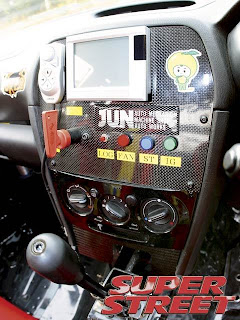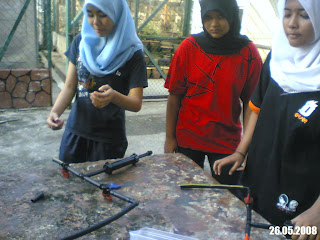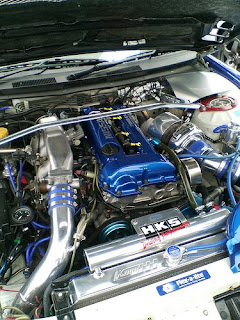ingat aku nak off dulu ar....cuti da nk abis,kene study lebeyh.....huhuhu
kpd kngkwn aku....
umar
janna
ca-er
dek`e
man j
alep
azam
dino
aie
azim
epul
za-8
mai
yuyun
miera
kema
sue
ain
aina mhmd
n pd sumer kwan2 aku kt mane je korng nyorok....
good luck!!!!
SAYONARA!!!!!!
mngkn aku bkak blog nieyh cuti raye kot....har!har!har!
BANGIN HEAD 4 SPM!!!!!!!
Evolusi KL Drift 2 Trailer
29 May, 2008
Sekian,Tammat~ KerOLHaruyama 0 Pengkritik yang setia
juggernaut!!!!
Sekian,Tammat~ KerOLHaruyama 0 Pengkritik yang setia
28 May, 2008
v3....henshin!!!
V3 would make appearances in most succeeding Kamen Rider TV series, last seen in the final episodes of Kamen Rider BLACK RX.
Sekian,Tammat~ KerOLHaruyama 0 Pengkritik yang setia
Labels: gamba tak der., sori
lalala~~
Kamen Rider Spirits
In the Kamen Rider Spirits manga, Murasame is an evil rider who is able to resurrect himself and is a double agent working for the Badan Empire and Interpol. He leads an army of ZX Riders against the other Kamen Riders but eventually turns to the side of good
Sekian,Tammat~ KerOLHaruyama 0 Pengkritik yang setia
27 May, 2008
cars!!!
The Laurel was one of the few Nissan vehicles which still used the rear wheel drive layout, making it popular as a car to modify, particularly the C33 model
Sekian,Tammat~ KerOLHaruyama 0 Pengkritik yang setia
lalala~~~
KAMEN RIDER STRONGER
Yuriko Misaki (played by Kyōko Okada) another cyborg warrior created by Black Satan. They team up, with Yuriko now becoming Electro Wave Human Tackle. The two eventually meet Tōbei Tachibana as well.
Stronger, Tackle, and Tōbei fight valiantly against the evil cyborg forces of Black Satan, continually meeting the head agents General Shadow, and the One-Eyed Titan. The Titan is defeated in episode 13, but manages to return in episode 17 as the One-Hundred Eyed Titan, posing an even greater threat than before. Despite sharing the similar goals of defeating Stronger and conquering the world, General Shadow and the Titan cannot seem to agree on a few other issues—for instance, which one of them gets to kill Stronger. Often, their bickering inadvertently allows him to escape their wrath.
In episode 26, Stronger is able to topple Black Satan once and for all. With his former organization in ruins, General Shadow forms the "Delza Army" to continue his malicious goals. There were two further defining moments for the series: first, in episode 30, Tackle sacrifices herself to save Stronger from Doctor Kate, a Delza Army general. Her death affects Stronger greatly, and he vows to keep fighting until evil is defeated. Tackles' death is sometimes compared to Riderman's sacrifice in Kamen Rider V3. In the following episode, Stronger's fight against evil is greatly assisted when he undergoes surgery and gains a devastating new power—the ability to power up into a new, stronger, form—"Charge Up!".
Ultimately, all the former Riders, Kamen Riders 1, 2 from the original Kamen Rider, V3 from Kamen Rider V3, X from Kamen Rider X, and Amazon from Kamen Rider Amazon, all appear in the final few episodes to help Stronger finally defeat the Delza Army and General Shadow. This sequence of episodes has attracted some praise from fans.
He wears various t-shirts emblazoned with the letter "S", along with numerous other items of clothing, including a denim jacket with a rose emblem. Stronger's entrance is also a hallmark of the series, with his opening serifu and accompanying whistle a particular highlight:
"The heavens call...
The earth cries out...
The crowds roar...
All calling on me to strike back against evil.
Now listen up, villains!
I am the warrior of justice,
The Kamen Rider Stronger!"
Sekian,Tammat~ KerOLHaruyama 0 Pengkritik yang setia
Labels: kamen rider yg blagak
my fav.....
Some time later, Takeshi Hongo returns to Japan and fights alongside Ichimonji. Now, Hongo is known as Kamen Rider 1 and Ichimonji, Kamen Rider 2. The pair is occasionally called "The Double Riders". With Hongo back, it's Ichimonji who now leaves Japan for training in South America. Near the end of the series, Rider 2 is back to help Rider 1 to defeat Gel-Shocker, Shocker's new denomination
Sekian,Tammat~ KerOLHaruyama 0 Pengkritik yang setia
now...talking abaout my fav.....

After this initial introduction, the series becomes, as with most tokusatsu programmes of the era, fairly formulaic. Each episode sees Hongo meeting another of Shocker's mutants, interacting briefly with supporting characters, such as his mentor Tachibana Tobei, and ultimately defeating the enemy, often with trademark "Rider Kick" or "Rider Punch" attacks.
However, this formula was drastically altered during the filming of episode ten. Fujioka, while attempting to perform a stunt on his motorcycle, shattered his leg. The surrounding episodes were quickly edited or otherwise altered to account for this, but Fujioka's injury forced him to take a longterm hiatus from acting, so production company Toei hired a new actor, Takeshi Sasaki, to play a new Kamen Rider character, dubbed Kamen Rider 2. In the show, it was explained that Shocker had built a duplicate of their original Kamen Rider cyborg in an effort to combat the threat that Hongo posed to their organization. This new character was introduced in episode 13, as Hongo's character was gradually phased out, a process that had been occurring since episode 11.
By the time Fujioka had recovered from his injuries, Kamen Rider had become fairly successful, and Fujioka found other work, so Sasaki continued to portray the main character of the series until episode 49, when Fujioka returned to the series full time. During this time, the two characters worked together as the "Double Riders", and Takeshi's character was written out. By episode 53, through the end of the series with episode 98, Hongo was the sole protagonist, but Sasaki returned for guest spots intermittently, in episodes 72-3, 93-4, and the finale.
Kamen Rider 1 and his partner Kamen Rider 2 next appeared in the sequel Kamen Rider V3. The titular V3 was Kazami Shiro, a junior of Hongo's, and begged them to turn him into a Kamen Rider after the murder of his family by the Destron organisation. Despite initially refusing, when the young man was mortally wounded assisting them, the two Riders transformed him into Kamen Rider V3, possessing both Kamen Rider 1's "skill" and Rider 2's "strength". The Double Riders were apparently killed detonating an atomic bomb, but reappeared alive and well later on in the series.
Sekian,Tammat~ KerOLHaruyama 0 Pengkritik yang setia
26 May, 2008
talking boUT caRS!!!

The name 180SX was originally in reference to the 1.8 liter displacement CA18DET engine used in the chassis. In 1991, however, the engine was upgraded to a 2.0 liter model, offered in two forms: the naturally-aspirated SR20DE engine and the turbocharged SR20DET variant. Although the new engine was of larger displacement, the 180SX nomenclature remained. A common body modification to the 180SX and its sister car, the North American 240SX fastback, is the Sileighty conversion.
180SX was also a trim level of the S110 Silvia in Europe. The badges for this model read "Silvia 180SX", so this car is not properly a 180SX by model, but a version of the Silvia instead.
Like the Japanese 180SX SR20DET discrepancy, European, as well as South African models of the S13 chassis were called 200SX though equipped with the CA18DET engine or SR20DET.
Sekian,Tammat~ KerOLHaruyama 0 Pengkritik yang setia
25 May, 2008
22 May, 2008
hari terakhir exam....hahaha
Sekian,Tammat~ KerOLHaruyama 0 Pengkritik yang setia
Labels: scandal cekgu ngan murid
WAAAA!!!!!!!!!
akhirnya.....exam mid yerar da abes!!!!!waaaa,eppy........tplom leh eppy lg.....pas cuti da mle hard!!!!ya!!!bLoW yOur MinD!!!!
Sekian,Tammat~ KerOLHaruyama 0 Pengkritik yang setia
16 May, 2008
ini lah kami....5DAMAI!!!
Sekian,Tammat~ KerOLHaruyama 0 Pengkritik yang setia
Labels: dorang ni la kawan aku
09 May, 2008
rb26dett
It is often possible to produce 600hp without modification of the engine internals (by use of larger turbocharger, and either keeping the stock twin turbo arrangement, or using a single turbocharger). With extreme modification, the RB26 motor is capable of power (over 1,340 hp).
There is a common oiling problem with the pre-1992 R32 RB26 motors, as the surface where the crank meets the oil pump was machined too small, eventually leading to oil pump failure at high rpm. This was fixed for later versions of the RB26.
The RB26DETT was used in the following cars:
Nissan Skyline GT-R R32
Nissan Skyline GT-R R33
Nissan Skyline GT-R R34
Sekian,Tammat~ KerOLHaruyama 0 Pengkritik yang setia
ca18det
 The 1.8 L CA18DET was the last version of the CA engine to be released. It produces 173 hp (124 kW) and 166 ft·lbf (228 Nm). It received a brand new DOHC aluminum head with 16 valves. The turbocharger was also upgraded to a Garrett T25 (.48 A/R) unit for increased flow capacity, and as such, was fitted with an intercooler to help volumetric efficiency. Fuel was delivered via Multiport Fuel Injection. Bore is 83 mm (3.3 in), and stroke is 83.6 mm (3.29 in). This near square design, coupled with the head design, allows CA18DETs to spin well beyond 8,000 rpms, even in stock trim. The CA18DET is a robust built engine considering that many people have produced over 600 hp (450 kW) with modification. Often referred to as the four cylindered RB engine.
The 1.8 L CA18DET was the last version of the CA engine to be released. It produces 173 hp (124 kW) and 166 ft·lbf (228 Nm). It received a brand new DOHC aluminum head with 16 valves. The turbocharger was also upgraded to a Garrett T25 (.48 A/R) unit for increased flow capacity, and as such, was fitted with an intercooler to help volumetric efficiency. Fuel was delivered via Multiport Fuel Injection. Bore is 83 mm (3.3 in), and stroke is 83.6 mm (3.29 in). This near square design, coupled with the head design, allows CA18DETs to spin well beyond 8,000 rpms, even in stock trim. The CA18DET is a robust built engine considering that many people have produced over 600 hp (450 kW) with modification. Often referred to as the four cylindered RB engine.
It was used in the following vehicles:
1989-1990 Nissan Silvia/180SX S13 (International market)
1989 Nissan Bluebird RNU12 SSS ATTESA Limited (Japanese Market)
1989-1993 Nissan 200SX S13-U Europe.
There were 2 versions of the CA18DET available, yet only one was produced for Japan. The late model Japanese CA18DETs received 8 port (low port) heads, with butterfly actuated auxiliary ports in the lower intake manifold which corresponded with 8 ports in the head.
Below ~3800 rpms, only one set (4 ports open, 1 per cylinder) of long, narrow ports would be open, accelerating the intake charge to the cylinder. This allowed for quick spool and good low end tractibility. At the 3800 rpm change over, not only would the ECCS shift into batch fire (as opposed to sequential) fuel injection, but it also opened the second set of short, wide ports (8 ports open, 2 per cylinder) which assisted in high RPM flow.
This motor is known for stronger torque characteristics, as well as faster spool at lower RPMs. However, due to displacement-based taxation and cost of emissions testing in Europe, the CA18DET was sold as the only available engine in the S13 chassis 200SX (Euro model) until replaced by the S14 in 1994. The Euro motors received the 4 port (high port) head and intake manifold, as well as revised ECCS ("Electronic Concentrated Control System") parameters.
Power was not increased, but high RPM flow was indeed improved, making the 4 port CA18DET the most desirable of the late generation Nissan turbo 4s. Due to superior head design (cam on bucket, as opposed to the complex and heavy rocker arm actuation of later motors like the SR and QR), many enthusiasts consider the CA18DET to be the best engine platform since the FJ20ET that powered the legendary DR30 Skyline DOHC-RS.
Sekian,Tammat~ KerOLHaruyama 0 Pengkritik yang setia
engine....sr20det
The Nissan Pulsar GTI-R version was developed as a World Rally Championship homologation engine. It received Quad throttle body and a Garrett T28 turbocharger, larger injectors, as well as a large top-mount intercooler.
It was available in the following vehicles:
S13/14/15 Nissan Silvia
S13 Nissan 180SX
S14 + S14a Nissan 200SX,200 PS (146 kW)
S15 Nissan Silvia (JDM), 250 PS (247 hp/184 kW)
N14 Nissan Pulsar GTi-R, 230 PS (169 kW)
Nissan R'nessa GT Turbo
U13 Nissan Bluebird SSS ATTESA LTD 210 PS (207 hp/154 kW)
U12 Nissan Bluebird SSS ATTESA
W11 Nissan Avenir GT4 230 PS
W10 Nissan Avenir Salut G GT Turbo 210 PS (207 hp/154 kW)
Nissan Serena
Nismo 270R (270 hp @6000 rpm)
Sekian,Tammat~ KerOLHaruyama 0 Pengkritik yang setia





























.jpg)
.jpg)
.jpg)
.jpg)
.jpg)
.jpg)
.jpg)
.jpg)
.jpg)
.jpg)
.jpg)
.jpg)
.jpg)
.jpg)
.jpg)













